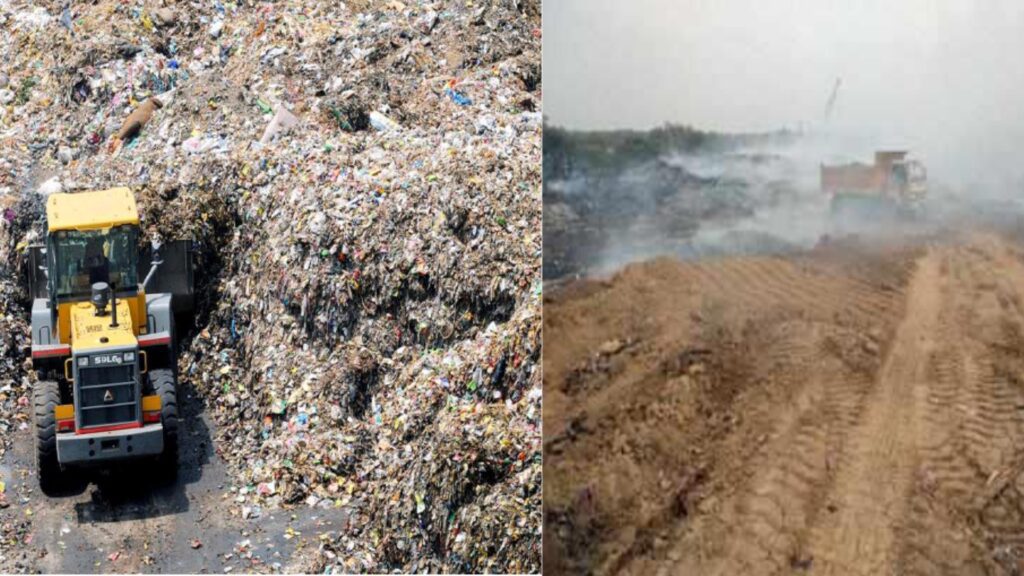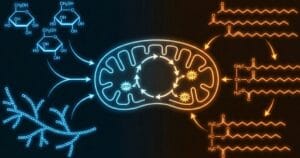
COMPETITIVE EXAM MCQs SERIES of ENVIRONMENTAL SCIENCE for UGC-NET/JRF, SLET, ARS, GATE, and other entrance tests – Hazardous Waste Management.
Syllabus Outline
- Definition, classification, and characteristics of hazardous waste.
- Sources and types of hazardous waste.
- National and international regulations and guidelines for hazardous waste management.
- Methods of hazardous waste generation and accumulation.
- Hazardous Waste Treatment Technologies (e.g. physical, chemical, and biological treatment).
- Landfilling, deep well injection, and ocean dumping.
- Incineration and thermal treatment processes.
- Transport of Hazardous Waste
- Techniques for site assessment and remediation.
- Effects of hazardous waste on human health and the environment.
This quiz contains the concept-based most frequently asked 25 MCQs of “Hazardous Waste Management“. Each question has a single correct/most appropriate answer.
*****
1. Which of the following is the correct order of solid waste management?
a) Source reduction – Recycling – Waste transformation – Landfilling
b) Source reduction – Waste transformation – Recycling – Landfilling
c) Source reduction – Landfilling – Recycling – Waste transformation
d) Source reduction – Recycling – Landfilling – Waste transformation
2. Open waste burning is not an acceptable method of solid waste management because
a) It releases toxic gases into the environment.
b) It requires large space and consumes oxygen.
c) Residues of open burning reduce the fertility of soil.
d) Management of residues of open burning is not cost-effective.
3. What is the main byproduct of anaerobic digestion that can be used as a fertilizer?
a) Compost
b) Biochar
c) Digestate
d) Leachate
4. Which of the following is a key indicator of successful composting?
a) Low oxygen levels
b) High ammonia content
c) High-temperature
d) Low pH
5. What is the primary environmental concern associated with landfill leachate?
a) Air pollution
b) Water contamination
c) Soil erosion
d) Noise pollution
6. Which of the following is an example of source reduction in solid waste management?
a) Recycling paper
b) Composting food waste
c) Using reusable shopping bags
d) Incinerating plastics
7. What is the primary advantage of using incineration for solid waste disposal?
a) Generation of compost
b) Reduction in waste volume
c) Production of methane
d) Recovery of recyclable materials
8. Which method is used to stabilize hazardous waste before disposal?
a) Incineration
b) Landfilling
c) Solidification
d) Composting
9. Which method is commonly used to dispose of hazardous solid waste?
a) Open dumping
b) Landfilling
c) Incineration
d) Composting
10. Which of the following policies can help in waste minimization?
a) Extended Producer Responsibility
b) Ban on single-use plastics
c) Construction & Demolition Waste Management Rules
d) All of the above
11. What is the key factor identified as the biggest obstacle in implementing effective solid waste management in India?
a) Lack of government funding
b) Inadequate recycling facilities
c) Improper waste segregation
d) Limited public awareness
12. What common thread is identified in successful waste management examples like Indore, India?
a) Advanced technology usage
b) Efficient segregation of waste at the source
c) Large-scale incineration facilities
d) Heavy reliance on landfilling
13. Which novel technique uses graphene oxide for heavy metals removal from hazardous waste streams?
a) Adsorption
b) Bioventing
c) Soil vapour extraction
d) Chemical precipitation
14. What is the use of nano-zeolites in hazardous waste management?
a) Thermal decomposition
b) Adsorption and removal of heavy metals and radionuclides
c) Chemical oxidation
d) Landfilling
15. The use of biosurfactants in hazardous waste management can enhance:
a) Solidification of waste
b) Remediation of hydrophobic organic compounds
c) Incineration efficiency
d) Chemical precipitation of heavy metals
16. The Electro-Fenton technique is effective for the treatment of:
a) Heavy metals in hazardous waste
b) Persistent organic pollutants in wastewater
c) Radioactive waste
d) Volatile organic compounds in air
17. What is a key challenge in the use of supercritical water oxidation for hazardous waste treatment?
a) High operational temperatures and pressures required
b) Limited applicability to organic waste
c) Slow reaction rates
d) Generation of large volumes of solid waste
18. The use of advanced oxidation processes such as ozonation and Fenton’s reaction is most effective for:
a) Heavy metal contamination
b) Degrading complex organic pollutants in wastewater
c) Radioactive waste stabilization
d) Incinerating municipal solid waste
19. The granular activated carbon adsorption method effectively removes:
a) Inorganic salts
b) VOCs
c) Heavy metals
d) Radioactive
20. The application of hydrothermal carbonization for hazardous waste management is primarily used to:
a) Incinerate waste at high temperatures
b) Convert wet organic waste into hydrochar
c) Solidify and stabilize heavy metals
d) Enhance the biodegradation of waste
21. The perfluorooctanoic acid contamination issue is associated with:
a) Electronic waste
b) Industrial chemical waste
c) Radioactive waste
d) Biomedical waste
22. The concept of zero liquid discharge in hazardous waste management focuses on:
a) Complete elimination of liquid waste discharge from industrial processes
b) No net generation of liquid hazardous waste
c) Minimizing the solid waste production
d) Enhancing the biodegradation of liquid waste
23. Which method uses ionic liquids for valuable metal separation and recovery from electronic waste?
a) Solvent extraction
b) Electrochemical reduction
c) Thermal desorption
d) Bioleaching
24. The Solvay process is associated with the management of:
a) Radioactive waste
b) Chlorinated organic solvents
c) Mercury-contaminated waste
d) Industrial chemical waste
25. The use of biopolymers in hazardous waste management is for:
a) Biodegrading waste
b) Stabilizing and solidifying waste materials
c) Enhancing the calorific value of waste
d) Electrochemical treatment
*****
Previous: Disposal of Solid and Hazardous Waste
Next: Electronic Waste Management
References
- Freeman, H. M. (1998). Standard Handbook of Hazardous Waste Treatment and Disposal, McGraw-Hill, 2nd edition.
- Ramachandra, T. V. (2006). Management of Municipal Solid Waste, Capital Publishing Company.
- Rao, M. N. & Sultana, S. S. (2012). Solid and Hazardous Waste Management, BS Publications, 1st edition.
- Agarwal, S. K. (2005). Environmental Management: A Textbook for Undergraduates, APH Publishing Corporation.

